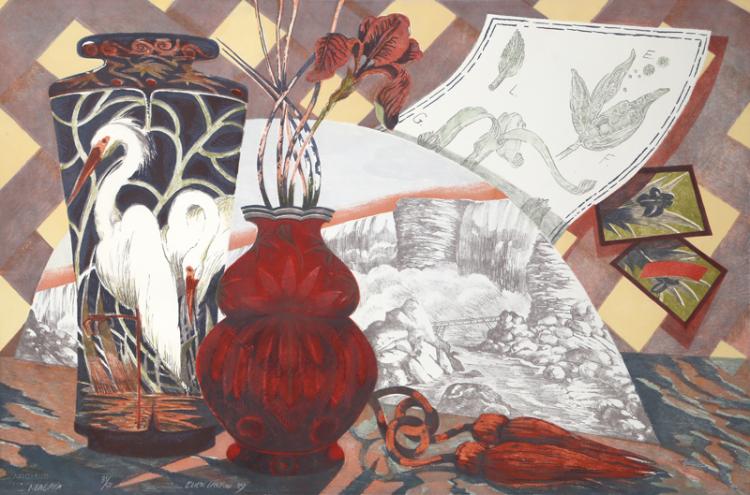Ever since man has been creating art, and especially for the last 30,000 odd years, magic and art are closely linked. Perhaps Marcel Proust said it best, when he wrote in Time Regained, "Through art alone are we able to emerge from ourselves, to know what another person sees of a universe which is not the same as our own and of which, without art, the landscape would remain as unknown to us as those that may exist on the moon. Thanks to art, instead of seeing one world only, our own, we see that world multiply itself and we have at our disposal as many worlds as there are original artists, worlds more different one from the other than those which revolve in infinite space, worlds which, centuries after the extinction of the fire from which their light first emanated, whether it is called Rembrandt or Vermeer, still send us their own individual special radiance."
You only have to leaf through any art magazine or go online to any gallery website to see how accurate Proust was about the multiplicity of optics and voices displayed in art. Magically we are transported to other lands and other ways of life. We see faces familiar and unfamiliar, fantasy upon fantasy, different approaches to objects that we have never thought about before. A visit to a major museum proves Proust's point about the longevity of great art down the ages. The masters know how to combine passion, subject matter, composition, colour, technique and the elusive wave of their "magic wand" to create art that withstands the test of time.
Ellen Lanyon, an American artist noted for her wonderful juxtapositions of fantasy and reality, calls upon this element of magic in her art. Using nature, everyday objects and intertwining living creatures and technology, she advocates for ecological balance. Her approach is joyous. As she says, "I become the magician who can transform flowers into fire, create the animals out of the inanimate, and utilise osmosis and gravity to create an illusion. Artists have the powerful tool of the imagination to make everything happen."
Niagara, lithograph, Ellen Lanyon, (Image courtesy of the artist)
The Persistence of invention, acrylic on canvas, Elle Lanyon (Image courtesy of DePaul Museum and the artist)
Eagle Beak, Ellen Lanyon, 1985. Lithograph, 44 ½ x 30 ¼ inches. Collection of the Madison Museum of Contemporary Art.
Call it imagination, call it magic, but so many artists spring to mind when one thinks about how art forces us to see other universes. Surrealist Salvador Dali is perhaps an extreme example, but Robert Rauschenberg, Mark Rothko or draughtswomen working today like Sky Pape or Carol Prusa all have shown me fascinating, magical worlds I had never conceived of. And those are but a small number of artists that come readily to mind - we can all make up our own list of magician artists.



